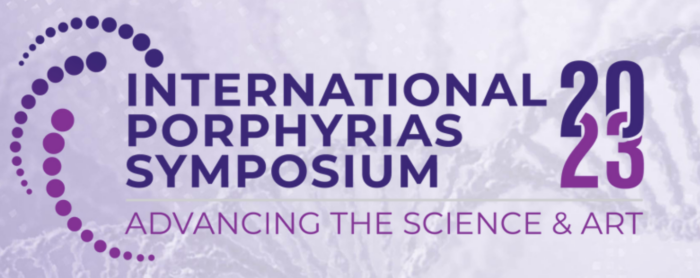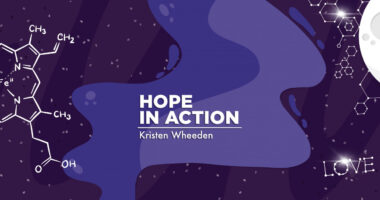A look at this year’s International Porphyrias Symposium
The conference brought together researchers, patients, doctors, and more

I recently returned from The International Porphyrias Symposium 2023 fueled with energy. The conference, held Oct. 26-29 in Bethesda, Maryland, featured a blend of scientific minds and patient experiences. Every handshake and shared story felt like a collective step forward in understanding the group of genetic disorders known as porphyria.
As I walked through the venue, my favorite moments were witnessing the meaningful exchanges between key stakeholders at the heart of our daily work: physicians, researchers, patients, pharmaceutical partners, and regulatory agencies.
In my role as president of the United Porphyrias Association and as the mother of a child with erythropoietic protoporphyria, this important symposium was both professional and personal for me.
A huge thank-you is in order to everyone behind the scenes, including my fellow organizers, presenters, sponsors, and patients. I hope everyone left with the same sense of enthusiasm that I did. And let’s not overlook the unsung heroes: the event staff, technicians, and everyone else who tended to the smallest details. Their efforts are truly appreciated.
This year’s symposium featured two new sessions in addition to the usual programming. We kicked things off with a porphyrias introductory course for beginners, which was attended by an overflowing room of participants. It was an eye-opening experience to see how many people were eager to learn about this condition. Feedback indicated that this course was a conference highlight.
Next, we held a Western Hemisphere session, which brought together professionals from seven countries across North, Central, and South America. It shed light on the diverse experiences of porphyria, including disparities in diagnoses and disease management. The presentations underscored the need for more cohesive care and understanding across the region, and the conference was the start of much-needed future collaboration.
Science meets real life: The scientific sessions
The scientific sessions delved into varied aspects and types of porphyria, including acute hepatic porphyria, erythropoietic porphyria, diagnosis, current research, pathogenesis, disease management, and emerging treatments. It was like assembling different pieces of the porphyria puzzle.
Each session was enriched by interviews with patients, which provided a personal perspective to the diagnostic journey and the disease’s impact. This approach was overwhelmingly cited as the conference’s biggest highlight, reminding us that our efforts are ultimately geared toward the benefit of real people affected by these conditions.

(Courtesy of United Porphyrias Association, Porphyrias Consortium, and the American Porphyrias Expert Collaborative)
Keynote presentations from leaders at the National Institutes of Health and the U.S. Food and Drug Administration — regulatory agencies that promote critical research and drug development and review — focused on ambitious research goals and patient-centered drug development. The emphasis on ensuring that the patient’s voice is not only heard but also prioritized aligned perfectly with our ongoing advocacy efforts.
The power of connection: Patient Day
Patient Day was truly memorable. A packed room revealed the deep need for community and gathering, as this disease can be so isolating. While technical glitches affected some online participation, the energy in the room never faltered. We’re working on sharing the presentations online to ensure broader public access to them.
Currently available online is a summary of an evidence-based study on the disease’s impact, presented by Rebecca Karp Leaf, the co-founder and co-director of the Mass General Porphyria Center in Boston.
“Porphyria Peeps” underscored the value of networking by creating a space filled with support and understanding. The sidelines of the symposium’s main events were buzzing with new collaborations and discussions. These informal interactions often pave the way for significant advancements in porphyria care. Every conversation brings us closer to United Porphyrias Association’s goal of a world free from the pain and challenges of this condition.
As we look ahead to the next symposium in 2025, my hopes are high for a conference that will offer groundbreaking research and information about treatments and clinical trials. This year’s symposium set a high standard, and I’m confident we can elevate it even further. We’re building on this year’s momentum and aiming for a future where the burden of porphyria is a thing of the past.
If this symposium is a measure of that, the future we envision might be closer than we think.
Note: Porphyria News is strictly a news and information website about the disease. It does not provide medical advice, diagnosis, or treatment. This content is not intended to be a substitute for professional medical advice, diagnosis, or treatment. Always seek the advice of your physician or other qualified health provider with any questions you may have regarding a medical condition. Never disregard professional medical advice or delay in seeking it because of something you have read on this website. The opinions expressed in this column are not those of Porphyria News or its parent company, BioNews, and are intended to spark discussion about issues pertaining to porphyria.








Comments